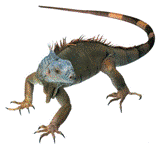Papers in the Biological Sciences

Papers in Herpetology
Document Type
Article
Date of this Version
2006
Citation
Serrano, D. and L. A. Somma. 2006. Hyla squirella (Squirrel Treefrog): Refugia. Herpetological Review 37(4):444.
Abstract
HYLA SQUiREUA (Squirrel Treefrog). REFUGIA. Entomologists commonly use trap-nests to monitor cavity-nesting Hymenoptera. These trap-nests consist of 5 x 10 cm pine timber cut into 12-cm lengths. Five lengths are then stacked and strapped together. Each pIece of timber is predrilled in each side to have either a 3.2, 4.8, 6.4, 7.9, or 12.7 Iiundiameterhole, 8 cmindepth. Thus, each trap-nest consisted of five pieces of wood containing 2 holes of each diameter. They are suspended with wire from tree trunks and branches. We set these wooden traps (N = 10) at Devil's Millhopper Geological State Park, Gainesville, Alachua Co., Florida, USA, from May 2003 to 25 Jan 2005. The habitat is:a limestone sinkhole in mixed hardwood forest/pine flatwoods. On 25 Jan 2005, ajuvenileHylasquirella (SVL= 18.9mm)had backed into an abandoned nest of a leafcutting bee, Megachile xylocopoides (Hymenoptera: Megachilidae), in a 12.7 nun diameter trap-nest. The abandoned nest which the frog inhabited was incomplete, consisting of 1-2 cells arid was constructed from cut leaves lining the 12.7 nun diameter hole. The hylid died after capture; both the frog and the bee nest were deposited in the Herpetology Collection at the Florida Museum of Natural History (UF 143740). We observed other H. squirella (ca. 10 times) using trapnests as refugia, perhaps hibernacula, at the same site during January and February of previous years. We removed ail of these frogs from the traps and released them.

